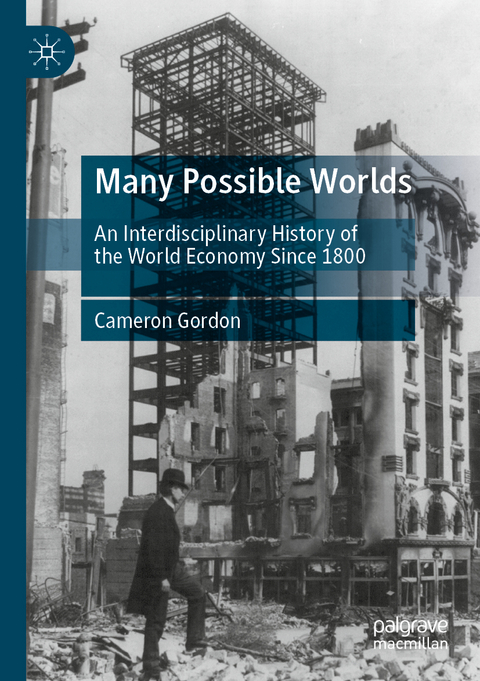
Many Possible Worlds
Palgrave Macmillan (Verlag)
978-981-19-9283-4 (ISBN)
The narrative consists of 30 chapters organized into 10 subsetsof 3: one chapter on a relevant core idea; one chapter focused on historical narrative and titled after a representative year; and one chapter on a relevant associated crosscutting theme. Major regional and topical discussions are provided, with special attention paid to business and organisational change and developing world scholarship. Small discussion ‘boxes’ focusing on illustrative cases and details are presented throughout the book. The last chapter contains over-arching conclusions.
Dr. Cameron Gordon is currently a visiting researcher with the Tax and Transfer Policy Institute, Crawford School of Public Policy at the Australian National University (ANU). He has held prior faculty appointments with the ANU College of Business and Economics, University of Canberra, City University of New York, and the University of Southern California, across a variety of departments including economics, finance, management, public administration, public health, and public policy. He has held visiting faculty appointments with the University of Sydney, Imperial College of London, and the Polytechnic University of Madrid. He has published widely in the fields of transport, infrastructure, economic history, sustainability, and corporate governance.
Chapter 1: Practicing Interdisciplinary Economic History.- Chapter 2: Understanding the Anthropocene.-Chapter 3: “1800”.-Chapter 4: “Political Economy”: The making of a North/South planet.- Chapter 5: Self, Socialisation, Organisation, Culture.- Chapter 6: “1848”.-Chapter 7: Revolution.- Chapter 8: Technology, Innovation and Invention.- Chapter 9: “1870”.- Chapter 10: La Belle Epoque.- Chapter 11: “Civilisation,” Gender, Race and Psyche.- Chapter 12: “1900”.- Chapter 13: Imperialism.- Chapter 14: Modernity.- Chapter 15: “1914”.- Chapter 16: Global Demographic Change.- Chapter 17: Ideas and Ideologies.- Chapter 18: “1929”.-Chapter 19: Global Finance.-Chapter 20: Exceptionalism.-Chapter 21: “1945”.- Chapter 22: War.- Chapter 23: Comparative Economic, Social and Political systems.- Chapter 24: “1968”.- Chapter 25: Cold War.-Chapter 26: TIME AND ‘PROGRESS’.-Chapter 27: “1989” “1991”.- Chapter 28: “Neo-liberalism”.-Chapter 29: Structural Change.- Chapter 30: “2016”.- Chapter 31: Populism, Elitism, and Identity.- Chapter 32: Old Models, New Realities.
| Erscheinungsdatum | 11.05.2024 |
|---|---|
| Zusatzinfo | 90 Illustrations, color; 29 Illustrations, black and white; LII, 1035 p. 119 illus., 90 illus. in color. |
| Sprache | englisch |
| Maße | 148 x 210 mm |
| Themenwelt | Geschichte ► Teilgebiete der Geschichte ► Wirtschaftsgeschichte |
| Sozialwissenschaften ► Politik / Verwaltung ► Europäische / Internationale Politik | |
| Wirtschaft ► Allgemeines / Lexika | |
| Wirtschaft ► Volkswirtschaftslehre ► Makroökonomie | |
| Schlagworte | Economic Modernisation • Environmental “first nature” • Global capitalism • Global Demographic Change • Globalism and Social Groups • Global Subsistence Economy • global trade • Ideas and ideologies • Industrial Revolution • Making of a North/South Planet • Material Production and Consumption • modern world economy • Nationalism and Populism • Political modernisation • Race, Gender, and Identity • Social/Economic Advances • social modernisation • Social Structures, Values, and Forces • Understanding the Anthropocene • World Economy |
| ISBN-10 | 981-19-9283-5 / 9811992835 |
| ISBN-13 | 978-981-19-9283-4 / 9789811992834 |
| Zustand | Neuware |
| Haben Sie eine Frage zum Produkt? |
aus dem Bereich


